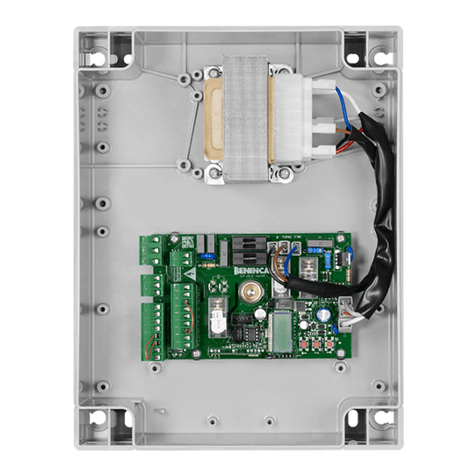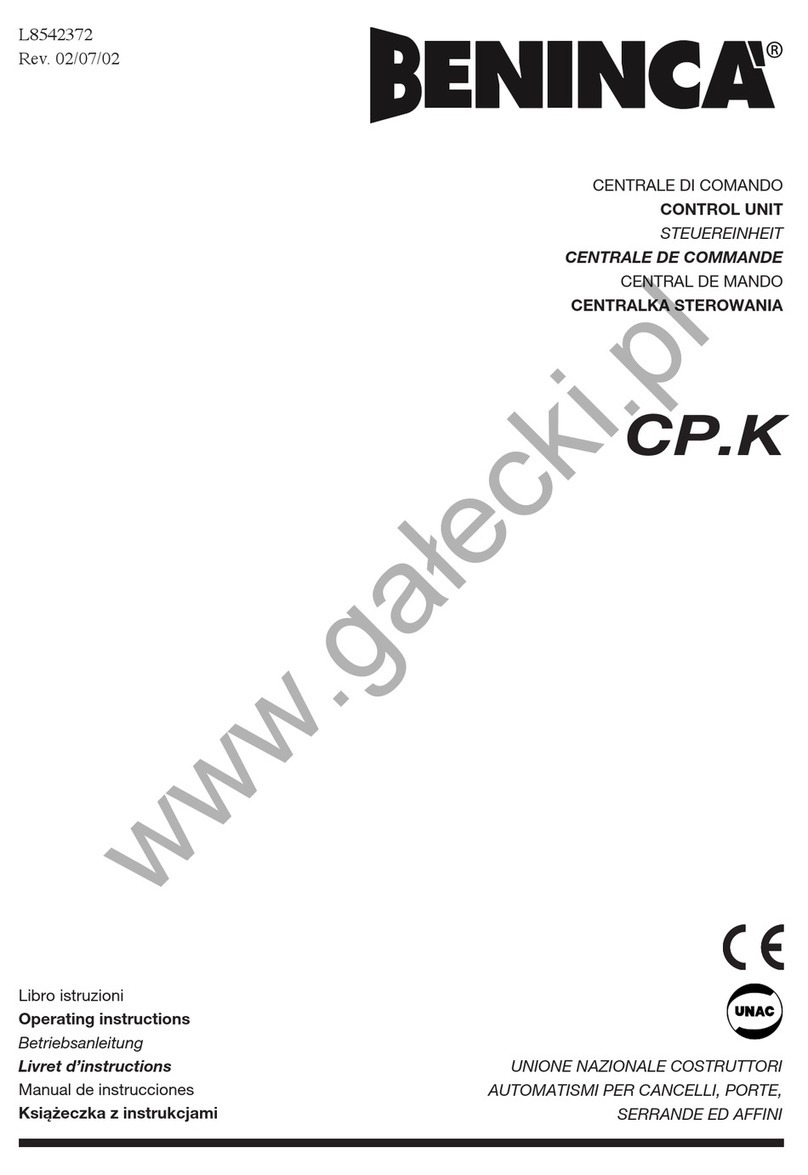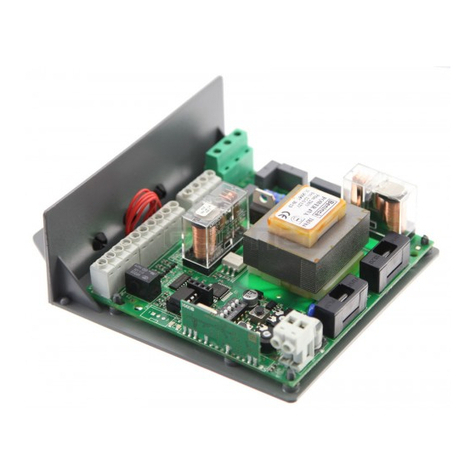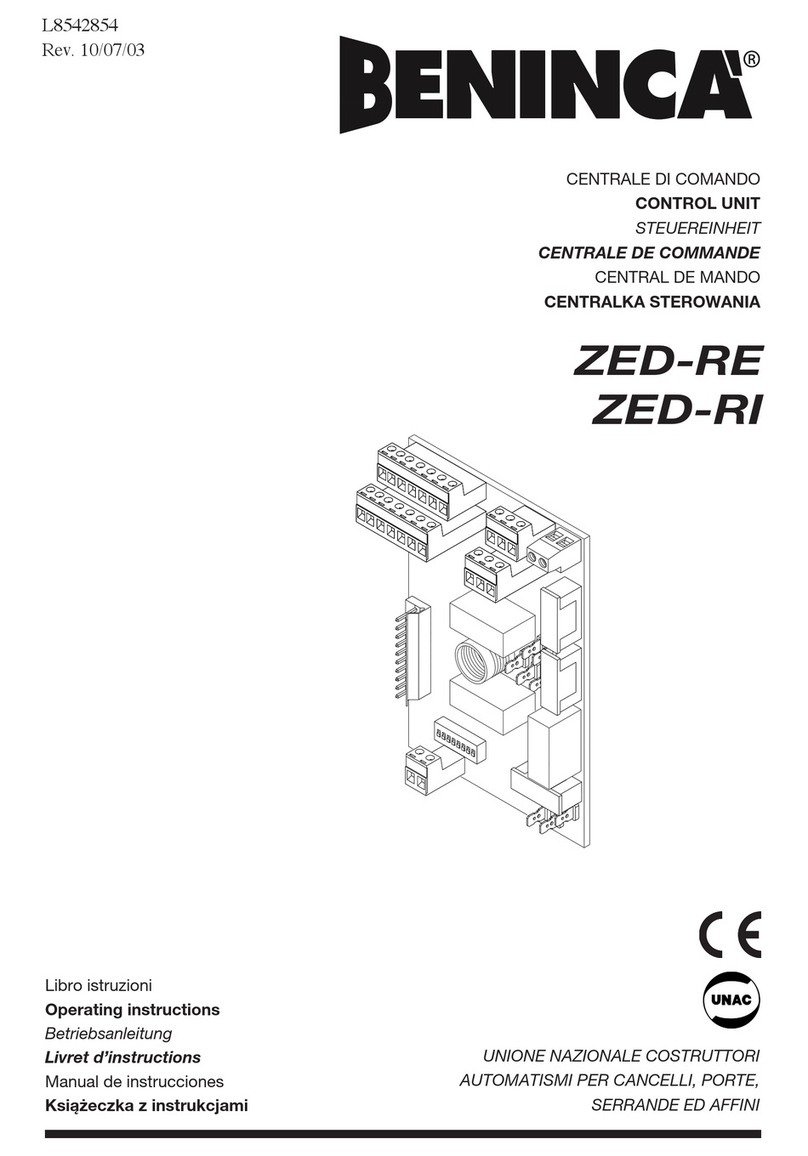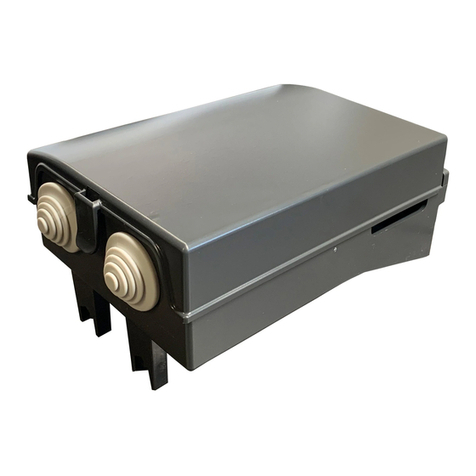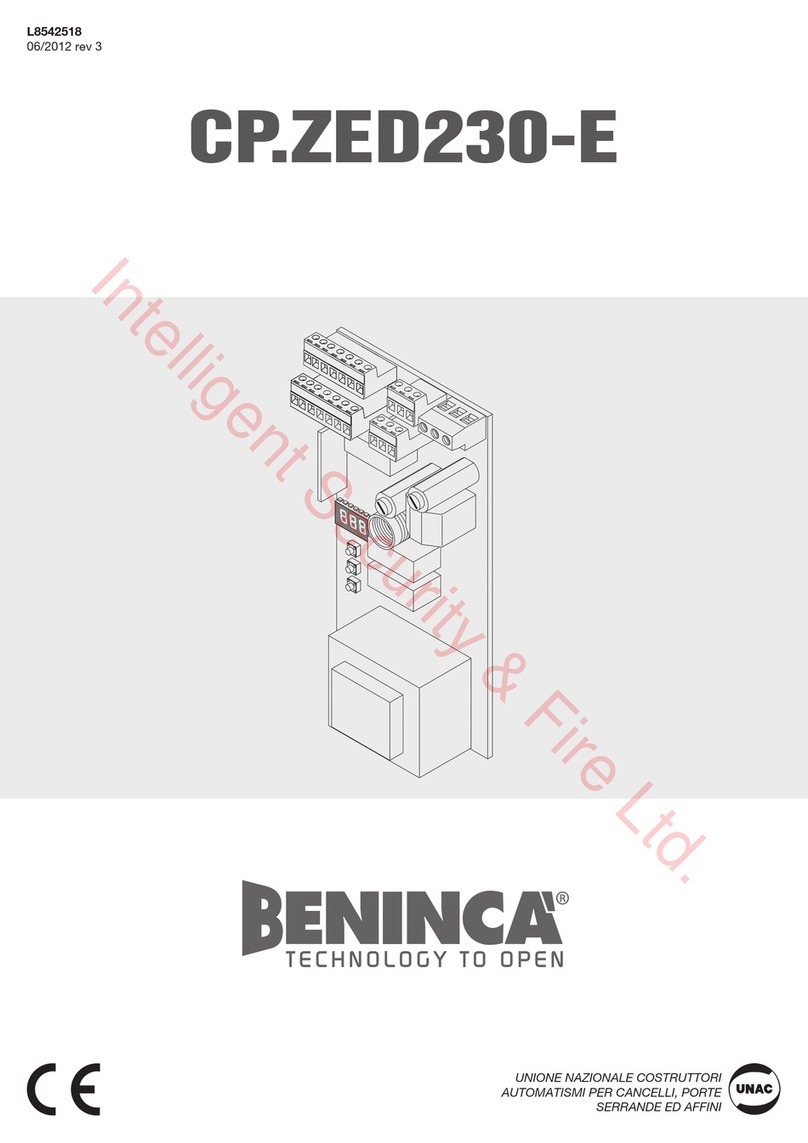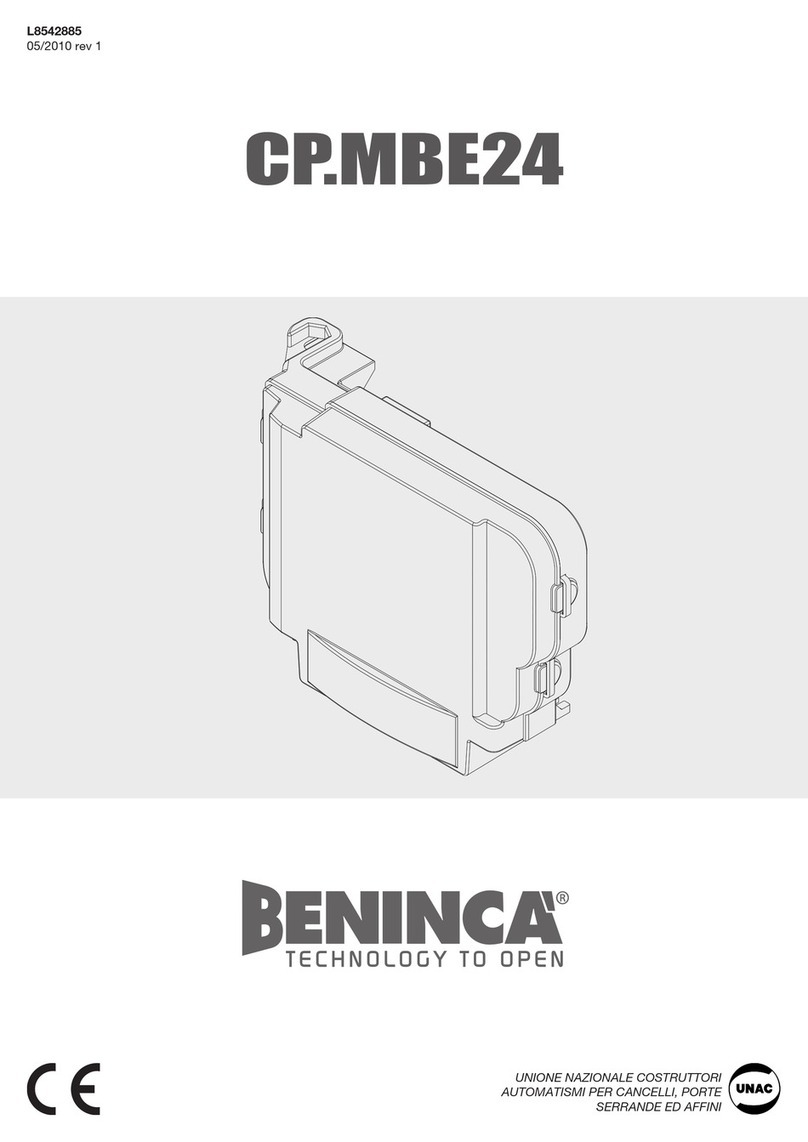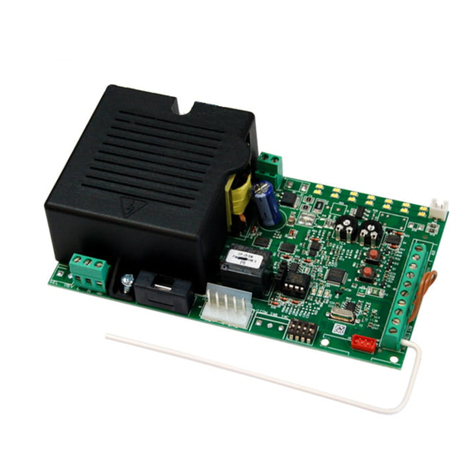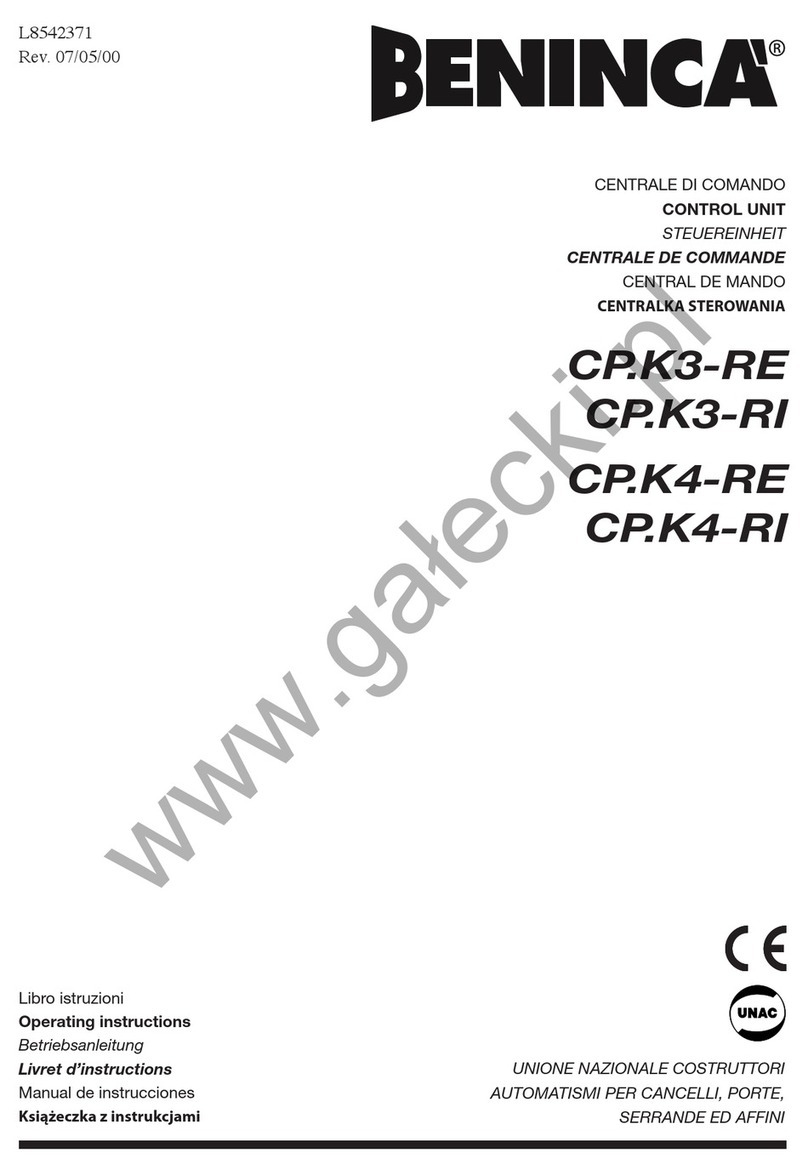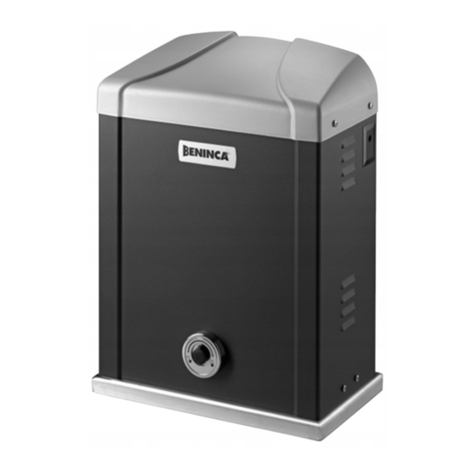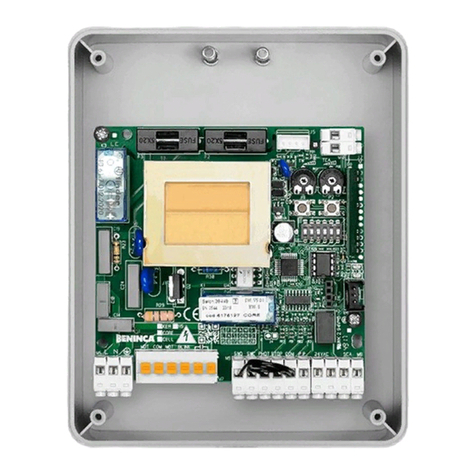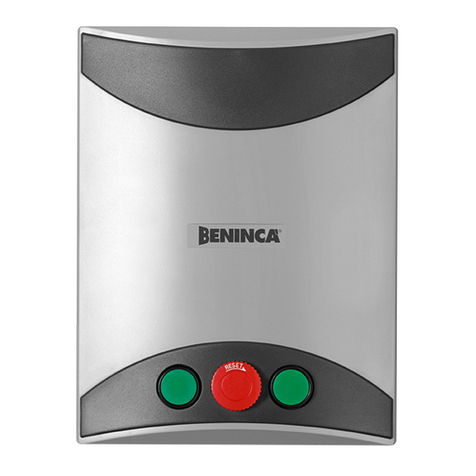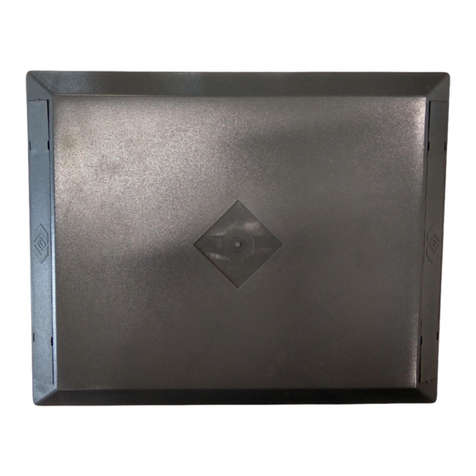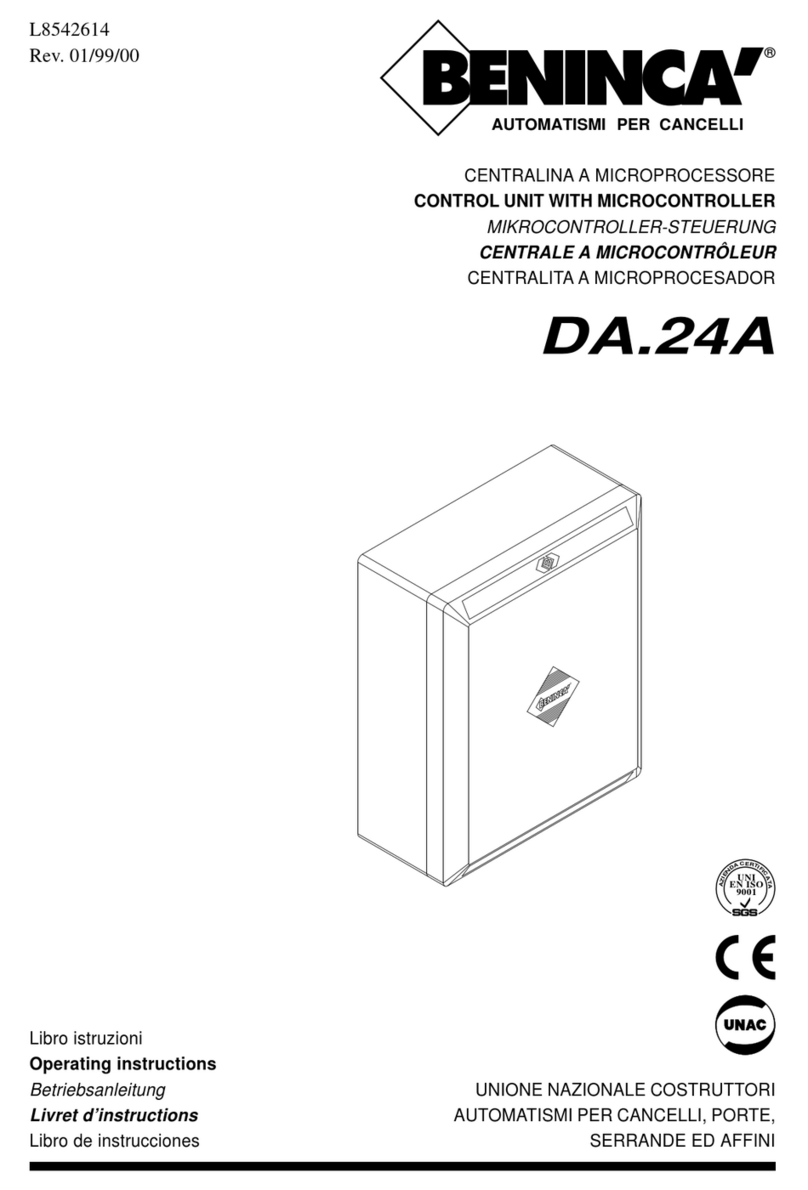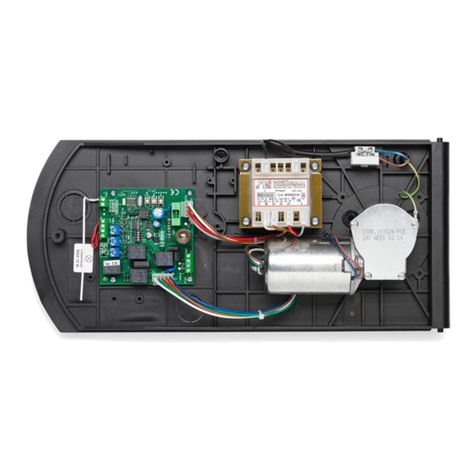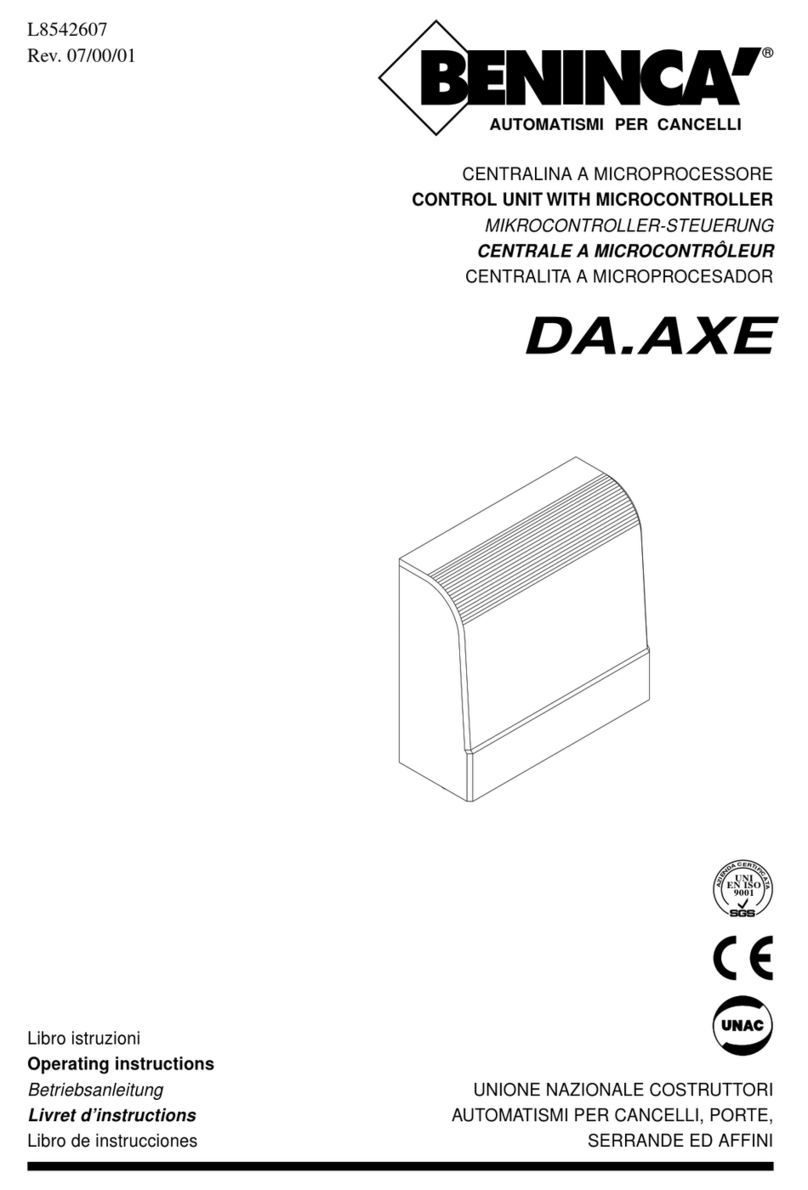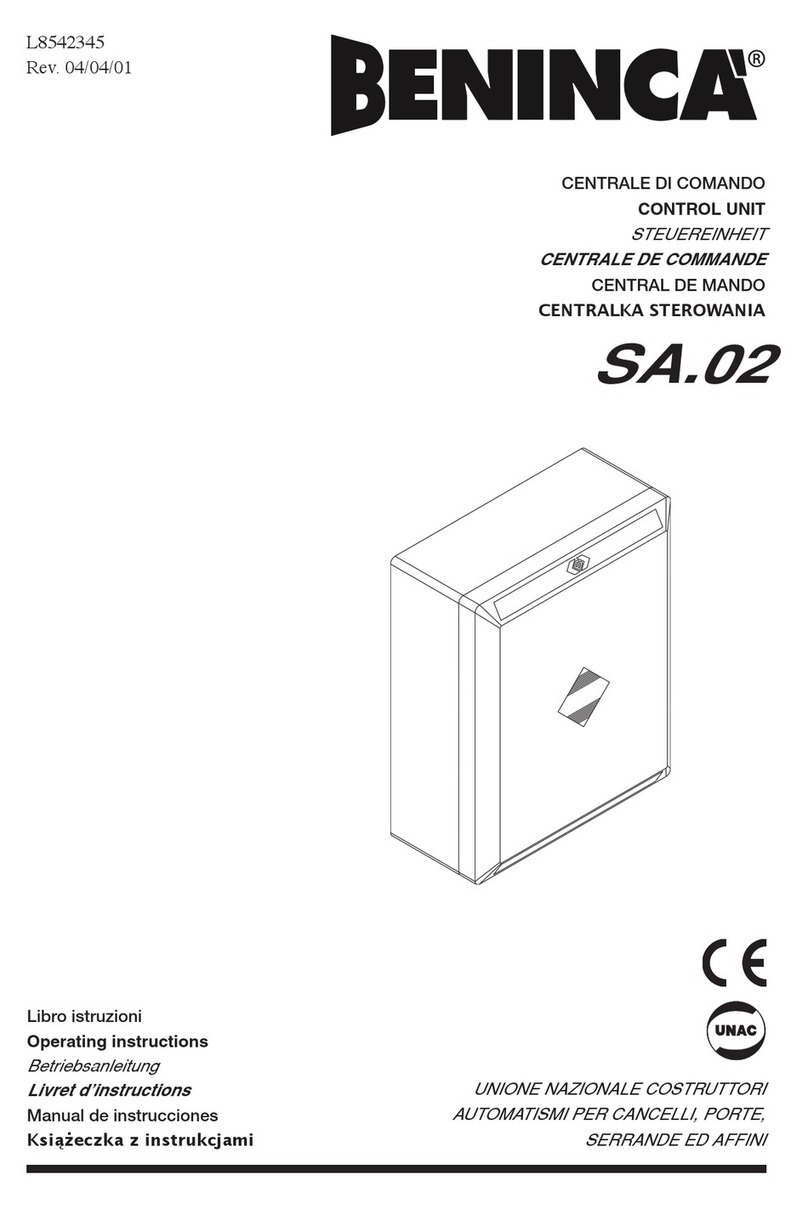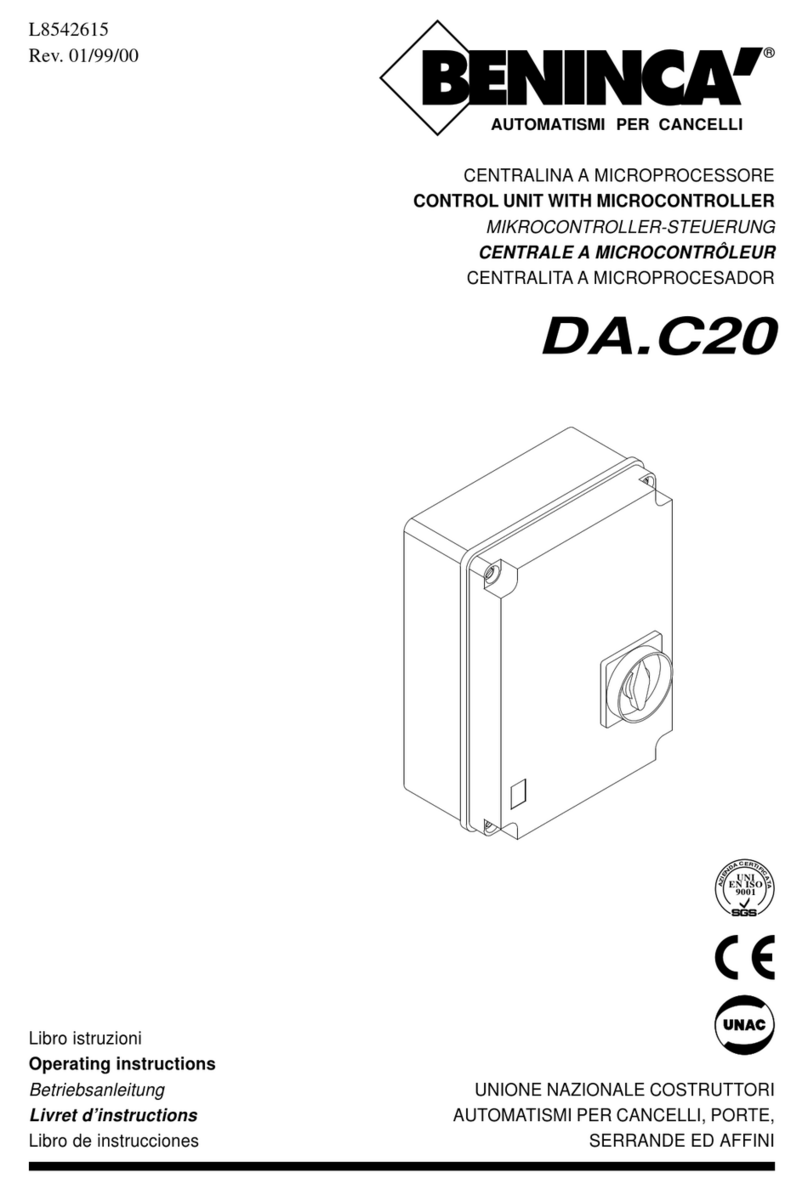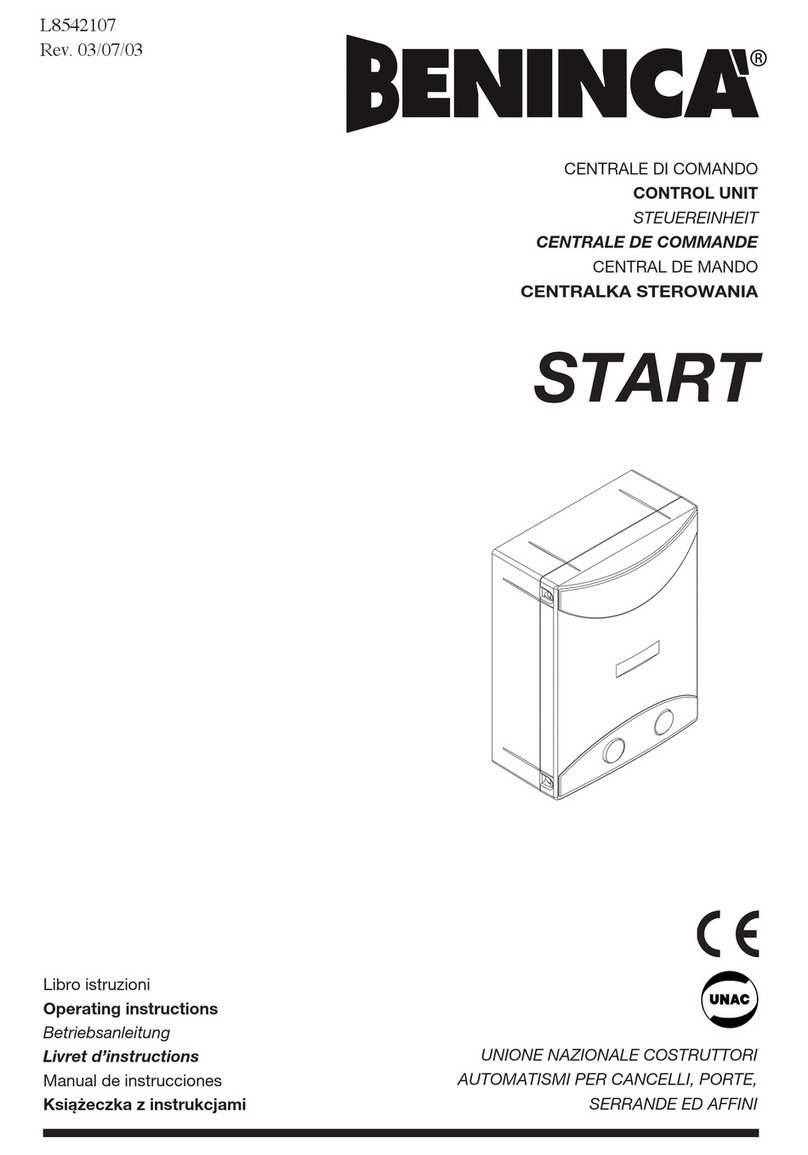
8
STEUERUNG ”DA.C15”
Die Mikrocontroller-Steuerung “DA.C15” kann mit Motoren mit einer Leistung nicht über 1500W verwendet werden.
Falls die Zentrale zu 380V gespeist wird, empfehlen wir die 3 Sicherungen zu 6.3A in der Nähe der Klemmleiste
mit den 3 Sicherungen zu 4A auszuwechseln, die sich in der Tüte befinden, die am Behälter der Zentrale
befestigt ist.
Empfehlungen für den Einbau
a) Der elektrische Einbau sowie die Funktionslogistik müssen mit den geltenden Richtlinien im Einklang sein.
b) Wir empfehlen, die Stromkabel (Motor, Zufuhr) von den Steuerkabeln (Drucktasten, Lichtschranken, Emp-
fänger) unterscheidbar zu halten; um Störungen zu vermeiden ist es ratsam, zwei getrennte Kabelmäntel
vorzusehen und anzuwenden (siehe EN 60204-1 15.1.3).
c) Sämtliche gemachten Anschlüsse vor der Stromzugabe erneut überprüfen.
d) Überprüfen, ob die Einstellungen der DIP-Drucktasten den gewünschten entsprechen.
e) Bei Stromzugabe muß die LED-Diode “POWER” leuchten.Falls nicht der Fall, überprüfen, ob die Siche-
rungen ganz sind und ob zwischen den Klemmen 1 und 2 (INPUT 230VAC - Phase/Neutral beachten)
230VAC 50Hz gegeben ist.
f) Die N.C.Eingaben, die nicht verwendet werden, mit dem Mittelleiter ”+V” überbrücken.
g) Falls die Drehrichtung des Motors vertauscht ist, genügt es, die Drähte “ÖFFNET” - “SCHLIESST” des
Motors selbst und die Drähte des Endschalters “FCA” - “FCC” zu vertauschen.
Funktion Eingaben/Ausgaben
(1,2,3) INPUT 230/380VAC= Zufuhr Steuerung 230/380VAC 50Hz.
(Phase/Neutral beachten: 1= Neutral oder L1,2= Phase oder L2,3= L3)
(4,5,6) SELEZIONE TENSIONE DI ALIMENTAZIONE
Die Klemmen 4 und 5 verbinden, wenn die Zentrale mit 230VAC gespeist wird.
Die Klemmen 6 und 5 verbinden, wenn die Zentrale mit 380VAC gespeist wird.
(7,8,9) APRE/CHIUDE/COM= An die entsprechenden Motorklemmen 230/380VAC 50Hz.
(Es istVorschrift, den Erdleiter (gelb/grün) mit dem Motorgehäuse zu verbinden)
(10,11) LAMP230= An 230VAC Blinkleuchte.
(12,13) OUT 24VAC= Ausgabe Hilfszufuhr 24VAC (max. 1A).
(14,15) SCA= Ausgang “Meldelleucht für offenesTor” 24Vac.
Der Ausgang der Meldeleuchte wird je nach Zustand der Zentrale geändert:
• Ausgeschaltet, wenn das Tor geschlossen ist.
• Langsam blinkend, beim Öffnen.
• Schnell blinkend, beim Schließen.
• Eingeschaltet, wenn das Tor beim Öffnen anhält.
(16,17) +V= Gemeinsam bei allen Steuereingaben.
(18) ASA= Eingang Schutzvorrichtung gegen Quetschung beim Öffnen (Arbeitskontakt): wird der Kontakt
beim Öffnen geöffnet, schaltet die Gangrichtung wenige Zentimeter lang um und hält dann an.
(19) ASC= Eingang Schutzvorrichtung gegen Quetschung beim Schließen (Arbeitskontakt): wird der Kon-
takt beim Schließen geöffnet, schaltet die Gangrichtung wenige Zentimeter lang um und hält dann an.
(20) FTC= Eingabe Lichtschrankenempfänger (Ruhekontakt)
(21) FCA= Eingabe Endschalter Öffnet (Ruhekontakt)
(22) FCC= Eingabe Endschalter Schließt (Ruhekontakt)
(23) STOP= Eingabe STOP-Drucktaste (Ruhekontakt)
(24) PED= Eingabe Drucktaste Flügel FUSSGÄNGER (Arbeitskontakt)
(25) P.P.= Eingabe SCHRITT/SCHRITT-Drucktaste (Arbeitskontakt)
(26) APRE= Eingabe ÖFFNET-Drucktaste (Arbeitskontakt)
